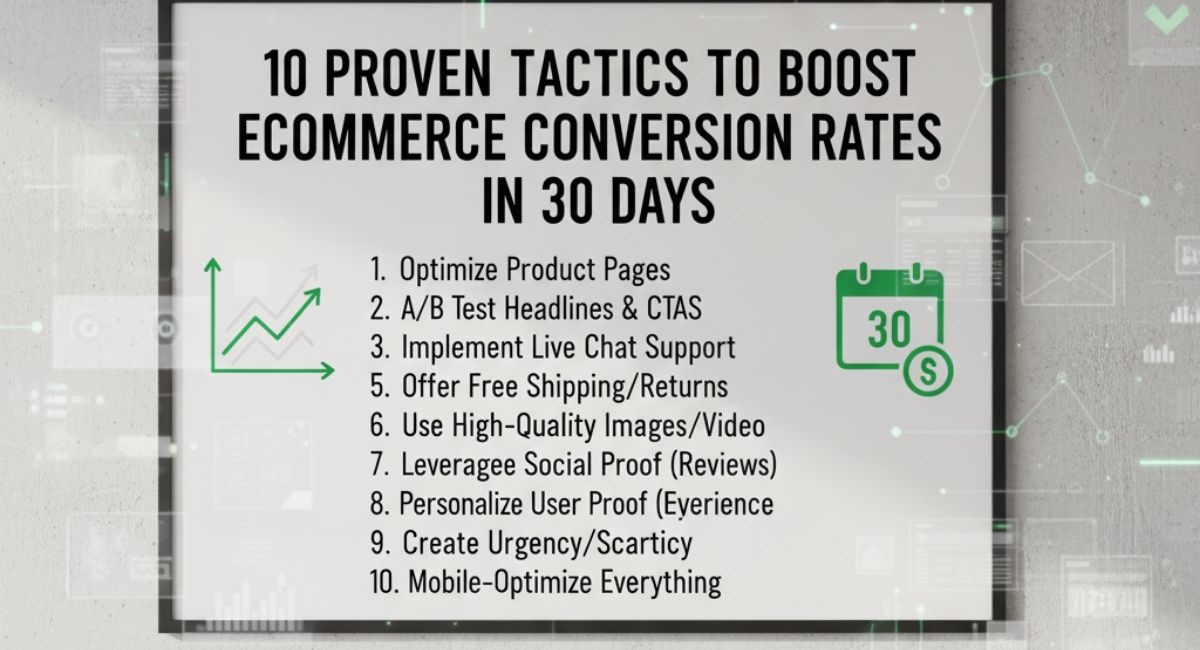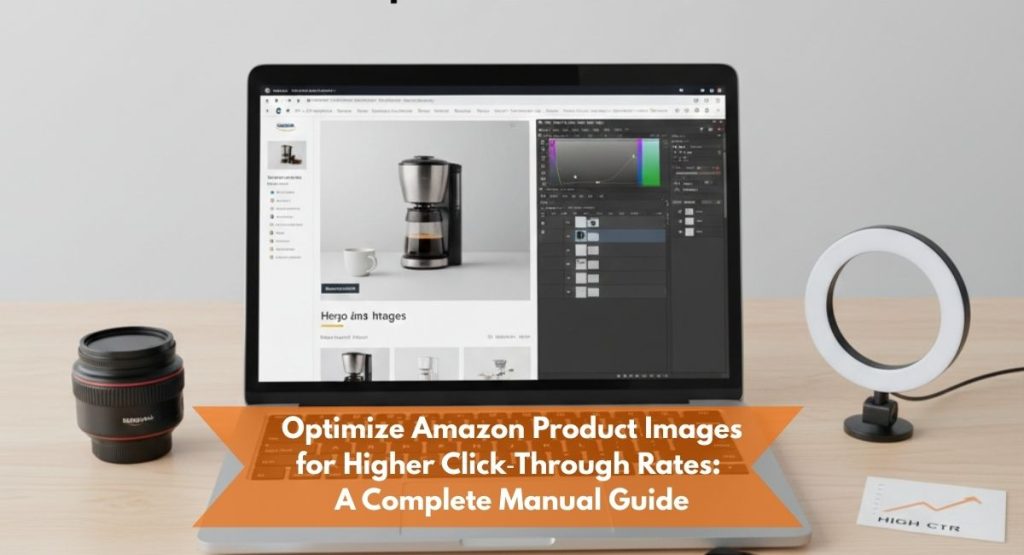Improving eCommerce conversion rates is one of the fastest ways to grow revenue without increasing ad spend. Many online stores pour money into traffic generation but overlook how visitors actually behave once they arrive. With the right optimization tactics, even small adjustments can lead to noticeable growth within 30 days.
Whether you manage a Shopify store or run a WooCommerce setup, the following guide provides tested strategies to help boost checkout conversions, reduce cart abandonment, optimize product pages, and increase average order value. The tactics combine data-driven insights and real-world marketing practices to make your store more persuasive, faster, and easier to navigate.
For businesses looking to strengthen their digital infrastructure, consider exploring eCommerce web development from Maxim Blu for a solid foundation that supports both performance and conversion growth.
Understand Where Conversions Drop
Before applying any tactic, identify the points where visitors leave your store. Use analytics tools such as Google Analytics 4, Hotjar, or Clarity to map out the customer journey. Determine which pages have high exit rates, where users abandon their carts, and which devices or locations show lower engagement.
| Stage | Metric to Track | Common Issue | Quick Fix |
| Homepage | Bounce Rate | Slow loading time | Compress images, enable caching |
| Product Page | Add-to-Cart Rate | Weak visuals or copy | Improve descriptions, add lifestyle images |
| Checkout | Abandonment Rate | Complex forms | Simplify checkout, enable guest option |
| Post-Purchase | Repeat Orders | Lack of incentives | Introduce loyalty or referral programs |
Once you know where leaks occur, the next steps become much more effective.
1. Optimize Product Pages for Decision-Making
Product pages are where your conversion rate is won or lost. Every element should build trust and encourage action.
- Use clear, benefit-focused copy. Avoid overloading visitors with features. Instead, describe how the product improves their daily life. If you need help refining copy, explore product description writing by Maxim Blu to make your listings more persuasive.
- Display high-quality visuals. Include multiple angles, zoom options, and short demonstration clips.
- Add social proof. Reviews and ratings can boost conversions significantly.
- Include shipping and return policies. Transparency reduces hesitation at checkout.
- Optimize for mobile users. Many visitors buy from their phones, so ensure all buttons are easy to tap and images load quickly.
A/B testing headlines and call-to-action (CTA) buttons can help determine which design or message drives more clicks.
2. Simplify the Checkout Process
A complicated checkout is one of the biggest barriers to higher conversion rates. Streamlining it can dramatically reduce cart abandonment.
- Offer guest checkout. Not everyone wants to create an account.
- Reduce form fields. Only ask for necessary information.
- Add multiple payment options. Include PayPal, Apple Pay, and local wallets.
- Enable progress indicators. Let customers know how many steps remain.
- Auto-fill shipping data. Modern browsers support autofill, so use compatible forms.
Testing with real users can reveal where confusion occurs. Simple changes like moving the coupon field to the end can prevent distraction during checkout.
3. Build Trust and Transparency
Customers buy when they feel confident. Displaying trust indicators across your site reassures visitors that your brand is credible.
- Display SSL security badges and privacy policies.
- Highlight verified payment methods and return guarantees.
- Show real customer reviews and user-generated photos.
- Add a customer support link or live chat option.
Adding real-time support is an effective tactic to improve conversions. Studies show that when customers get instant answers, they are far more likely to complete their purchase. For implementation guidance, Maxim Blu’s blog article on using chatbots to increase eCommerce conversions explores how AI chat tools help with faster responses and improved engagement.
4. Speed Up Page Loading Times
Website speed directly impacts conversion rates. A slow-loading store frustrates users and lowers search engine rankings.
To diagnose performance, use Google PageSpeed Insights or GTmetrix. Focus on:
- Compressing large images
- Using a content delivery network (CDN)
- Enabling lazy loading for media
- Reducing JavaScript and CSS requests
Even shaving one second off load time can increase conversions by up to 7%. If you’re unsure how to optimize site speed, website speed optimization services from Maxim Blu can help fine-tune performance without redesigning your store.
5. Use Persuasive Copywriting Across the Funnel
Words influence buying decisions as much as visuals do. Each page—homepage, category page, product page, and checkout—should use consistent and emotionally resonant copy.
Key practices include:
- Using customer-centric language that reflects real problems and desires.
- Creating urgency with limited offers or “only X left” notices.
- Writing scannable, short sentences with clear CTAs.
You can elevate your message through professional eCommerce copywriting services designed to align tone and persuasion.
6. Leverage Personalized Recommendations
Personalization helps show shoppers relevant items based on their past behavior. It encourages cross-selling and boosts the average order value.
Simple personalization ideas:
- “Frequently bought together” sections
- “Recommended for you” based on browsing history
- Upselling bundles or accessories at checkout
Use AI-driven recommendation tools integrated with your platform. They track real-time browsing habits and improve over time.
| Personalization Type | Tool or Method | Impact on Conversion |
| Product Bundles | Shopify Scripts or WooCommerce Plugins | Higher average order value |
| Personalized Emails | Klaviyo, Mailchimp | Improves repeat sales |
| Dynamic Homepage Banners | AI targeting tools | Boosts engagement rate |
7. Retarget Cart Abandoners Effectively
Cart abandonment emails and retargeting ads bring back customers who almost converted. Timing and messaging are everything.
- Send reminder emails within 1–2 hours of abandonment.
- Include product images, price, and a short incentive (like free shipping).
- Test subject lines that create curiosity or urgency.
- Use dynamic retargeting ads on social platforms to re-engage lost visitors.
If you already run ads, improving campaign relevance can help capture these users more efficiently. Consider testing Google Ads management services from Maxim Blu to structure better retargeting strategies.
8. Encourage User Reviews and Social Proof
Authentic reviews shape trust more effectively than polished brand messages. Encourage customers to leave feedback after purchase by offering small incentives or loyalty points.
Post positive reviews prominently on product pages and social channels. Social proof also includes:
- Influencer endorsements
- Verified buyer badges
- Real-life images from customers
Integrating social media feeds on your product pages helps potential buyers see how others use your products.
9. Improve Mobile Shopping Experience
More than half of all eCommerce traffic comes from mobile devices. A mobile-optimized experience must be fast, intuitive, and visually clear.
- Test your store on multiple screen sizes.
- Keep CTAs visible without scrolling.
- Make use of sticky add-to-cart buttons.
- Simplify navigation with clear icons and dropdown menus.
Consider a responsive design update through Shopify web development for better usability and retention.
10. Analyze and Refine With Data
Optimization doesn’t end after implementing changes. Track performance metrics weekly to see what’s improving.
| Metric | Tool | Ideal Goal |
| Conversion Rate | Google Analytics | 2–5% or higher |
| Cart Abandonment Rate | CRM or Plugin Data | Below 60% |
| Average Order Value | Shopify or Woo Reports | Increasing trend |
| Page Load Time | PageSpeed or GTmetrix | Under 3 seconds |
Use A/B tests to refine changes. Small insights, such as adjusting product image placement or rewording CTAs, can lead to measurable growth.
For advanced monitoring, technical support from AI SEO strategy experts can help combine analytics and automation for continuous optimization.
Additional Tips to Boost Conversions Quickly
- Offer limited-time promotions. Create urgency with countdown timers.
- Introduce a loyalty or referral program. Encourage repeat buyers.
- Use exit-intent popups. Offer discounts to visitors about to leave.
- Add trust-based visuals. Certifications, media mentions, and guarantees work well.
- Ensure consistency. Fonts, colors, and tone should stay uniform across all pages.
FAQs About eCommerce Conversion Rate Improvement
Q1: What is a good conversion rate for eCommerce stores?
Most eCommerce stores average between 2–4%. Anything above 5% is considered strong, but it varies by niche, traffic source, and pricing strategy.
Q2: How long does it take to see improvement?
With focused effort and daily monitoring, visible results often appear within 30 days, especially when addressing checkout and speed-related issues.
Q3: What’s the fastest way to reduce cart abandonment?
Simplify the checkout, enable guest checkout, and use automated cart recovery emails within the first few hours.
Q4: Do mobile shoppers behave differently?
Yes. They are often more spontaneous but expect faster loading times and shorter steps. Optimizing for mobile directly impacts conversion rate.
Q5: Can product descriptions really influence conversions?
Absolutely. Engaging and informative descriptions not only attract organic traffic through SEO but also guide users toward confident buying decisions.
Q6: Should I use AI tools for optimization?
AI-driven personalization, chatbots, and SEO tools can analyze behavior faster than manual methods. Integrating them enhances accuracy and scalability.
Final Thoughts
Improving eCommerce conversion rates within 30 days is achievable when data, design, and strategy work together. Focus on product page clarity, checkout simplicity, speed, and trust. Keep testing small details and track user behavior closely.
For store owners ready to implement these tactics with expert support, Maxim Blu offers comprehensive eCommerce development, SEO optimization, and conversion-focused design services. Their approach combines performance, design, and content strategy to ensure your online store doesn’t just attract visitors—but turns them into loyal customers.





